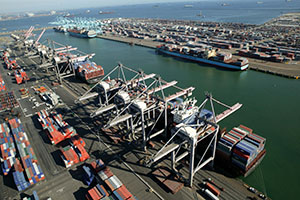- HOME
- Research Projects
Research Projects
Apr 1, 2012 - Mar 31, 2014
Logistics Strategy of the World’s Ports in the Supply Chain Age
| Leader |
|
|---|
Background and Objective:
As the world economy is globalized, the business environment of ports has drastically changed from “the age of physical distribution” to “the age of supply chain”. In response to this change, ports are having a critical look at their traditional business model and introducing new strategies.
In particular, while the port management used to mainly focus on improving their terminals as an interface between shipping and land transport, it is now undertaking a range of logistics strategies such as offering integrated logistics services within ports and developing efficient supply chain networks deep into their hinterlands. Also diversified are their business approaches and partners with their activities expanding far beyond the boundaries of ports unlike in the past.
This study aims to analyze these emerging logistics strategies being implemented by major ports in North America and Europe. It is also intended to provide suggestions to Japan’s port policy that is to strengthen the international competitiveness of container ports, following the recent amendments in the Ports and Harbors Law in March, 2011.
Approach and Progress:
In 2012, the first year of this 2-year project, previous research works were reviewed with regard to the impacts that the supply chain age has brought to port management and strategy.
Then, five major ports on the west and east coasts of US were studied, including site visits, in terms of their management systems as well as strategic logistics projects. Main findings are; (1) active development of logistics parks, both by port authority and private sector, (2) promoting concentration of logistics and manufacturing companies onto Free Trade Zones, (3) strengthening ports’ connection to railway networks by developing huge on-dock or near-dock rail terminals, (4) implementing large scale railway corridor projects with financial assistance of the Federal Government, and (5) preparing for introducing automation of container terminals at major ports.
In 2013, having studied major European ports similarly, port’s logistics strategies will be analyzed in terms of basic concept, functional type, implementation method, results and effects, and roles of government and port authority. Implications to Japanese port policy will also be discussed.
Photo: Port of Los Angeles
